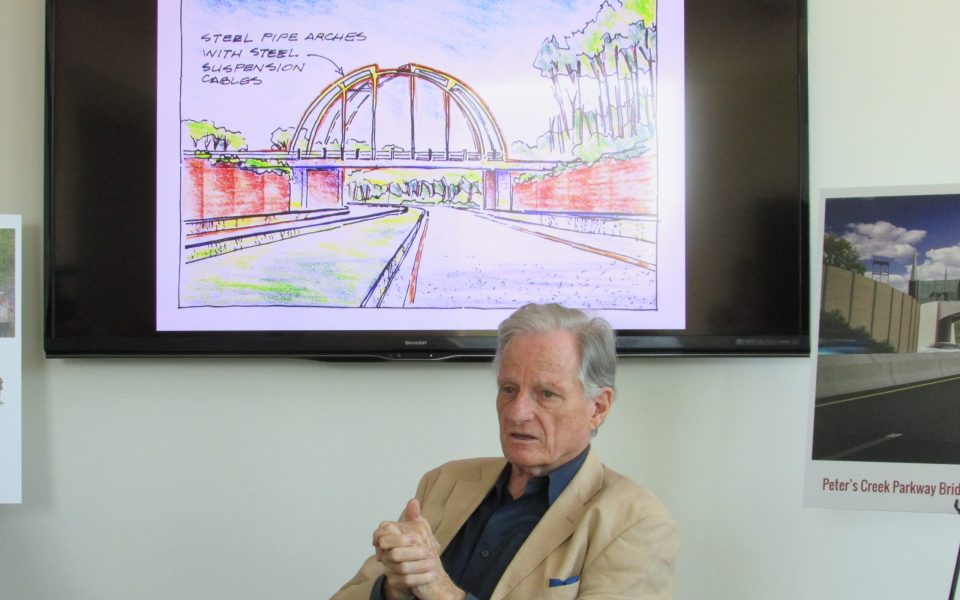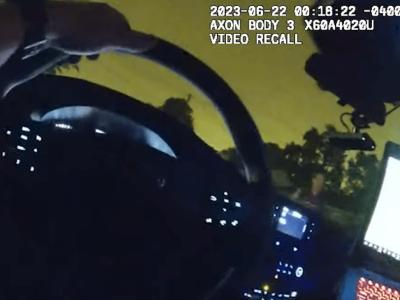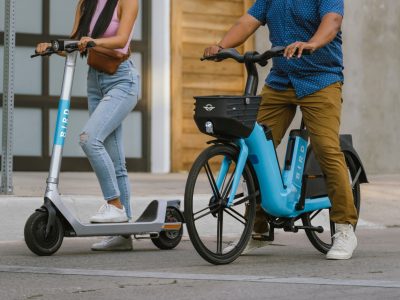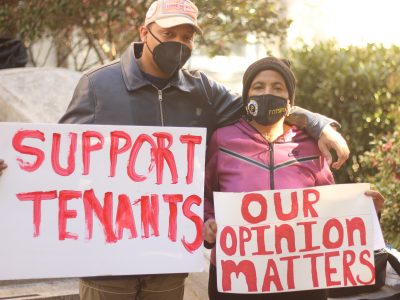by Jordan Green
Three world-renowned designers unveiled concepts for bridges in downtown Winston-Salem on Monday as Creative Corridors made a push to include iconic features, part of the renovation of Business 40.
With work expected to begin on the renovation of Business 40 through downtown Winston-Salem next summer, the Creative Corridors Coalition is making a concerted effort to promote iconic design features for four bridges that will provide pedestrian and automotive connectivity.
“It was our turn finally to get a redo on this aging infrastructure that was constructed in the 1950s,” said Lee French, chairman of the group’s board of directors. “Given that, we asked ourselves the question: What would it take to do something special, something that would not only symbolize our aspirations, but would actually be a bona fide and tangible strategic development to support the capital investment that has been made?”
Noting that more than $1.2 billion has been invested by the private sector in Winston-Salem’s revitalization over the past 15 years and that almost $200 million is being spent on new highways, streets and bridges, French said it’s important to leverage and protect those investments.
“It’s not just about beautiful designs and beautiful architecture,” he said. “It’s about truly connecting or reconnecting our city in a way that we haven’t been able to since those roadways were built in the 1950s, literally dividing parts of our community.”
French said the iconic design features will complement ongoing real-estate investment while acting as an asset to attract additional tourism and workforce talent.
Creative Corridors announced on Monday that two foundations associated with the Hanes family along with an anonymous donor have contributed a total of $550,000 in part to pay three renowned designers to develop concepts for the four bridges. Donald McDonald, Larry Kirkland and Walter Hood spent the day presenting their designs and answering questions.
McDonald, who also helped put together the Creative Corridors master plan, designed a dome-like set of twin arches over the interchange at Highway 52 and the new Research Parkway, which will function as a key gateway into downtown while the renovation of Business 40 takes place from 2016 through 2020. The arches take visual cues from the Wells Fargo building, which was designed by architect César Pelli.
McDonald is responsible for the design of the Cooper River Bridge in Charleston, SC, the San Francisco-Oakland Bay Bridge and Tilikum Crossing, a new bridge in Portland, Ore. designed for pedestrians, cyclists and mass transit.
McDonald also contributed the design for the Green Street bridge, a pedestrian crossing that will be built near BB&T Park in Winston-Salem. Tiered arches connected with radial cables reinforce an idea that replicates the design of Moravian arches and the Wells Fargo building, along with the silhouettes of trees. McDonald said he got the idea for the bridge during a visit earlier this year.
“I came to the city and I saw the trees without the leaves on them,” he recalled. “I saw the Wells Fargo building and I said, ‘I’m going to reinforce that idea.’” The arches represent the silhouettes of trees, overlaid to suggest one after another receding into the horizon, while the cables represent the branches.
Larry Kirkland, a public-art designer whose work is installed at Penn Station in New York City and the American Red Cross headquarters, unveiled a design for the Peters Creek Parkway bridge, which will serve as a western gateway to downtown. The bridge design features a glass barrier wall and plinths, or columns that flank the path at either end.
“Like Donald [McDonald], I was inspired by the original beginnings of this community, which is the Moravians,” Kirkland said. “And I took the shape of the Moravian star and pulled it up so it’s like a spire…. So I wanted this to talk about the history of the city but to also be about aspiration, so it is a spire. So by taking this and pulling it up and making it a glass, stainless steel and LED plinth, these elements are about 25 feet tall.”
Walter Hood, who studied at NC A&T University in Greensboro and went on to create the landscape design at the MH deYoung Museum in San Francisco, presented a plan for the Strollway. Currently a tunnel near the BB&T Building, Hood’s plan converts the transit point to a “land bridge” with natural features.
“On the north side, coming from downtown, we actually have the opportunity to make a park experience before you get to the bridge,” he said. “Once you get on the bridge you actually have the vegetation coming all the way in. And our early examples show that we were trying to bring big trees as far out as possible, so we’re actually using them as buttresses. But we don’t think this is possible with DOT. So the larger trees will stop [at the edge] but we’ll be able to have medium sized, flowering trees — dogwoods, redbuds, those type of trees.”
French said the NC Department of Transportation is currently putting the designs “through a rigorous set of engineering and costing reviews,” adding that he believes they can be constructed within budget. He said about $10 million in public funds and $5 million in private money — to be raised by Creative Corridors — will be needed to complete the project.
Winston-Salem Assistant City Manager Greg Turner said there is $3 million available for enhancements on the Business 40 renovation project from two different types of bonds, or public debt instruments. Turner said staff plans to bring cost estimates and design proposals for the bridges before the public works and finance committees of city council sometime next month.
Pat Ivey, a division engineer with the NC Department of Transportation, confirmed that the state agency has $700,000 in contingency funds available for the twin arches at the Highway 52-Research Parkway interchange. He said the contractor responsible for building the interchange and the new roadway originally bid the arches at $3 million, adding that Creative Corridors is modifying its design and materials to bring the cost down closer to $1 million.
Ivey said the department of transportation is on board with many of Creative Corridors’ design concepts, including glass barrier walls at the Peters Creek Parkway bridge and the use of a brick motif, if not the actual material lining the walls of the freeway. Much depends, he said, on what the city of Winston-Salem is willing to contribute or Creative Corridors is able to raise privately.
“We have been working very closely with the city and Creative Corridors from the start,” Ivey said. “We’re going to be on board with whatever recommendation the city makes to include in the project.”
Remarks by representatives of the parties involved in the project indicate a new spirit of cooperation. The relationship between the NC Department of Transportation and Creative Corridors hasn’t always been smooth, with the state agency in the past insisting that it is legally required to hold its own public process, and local architects tasked with establishing design guidelines complaining that DOT ignored their input.
“We are optimistic that [DOT’s] recommendations back [to the city] will not only resemble but will be exactly what the designs are,” Creative Corridors Chairman French said on Monday. “We’re realistic in understanding that DOT works with certain practical realities. We’re hopeful that if they make recommendations for the designs at all they will be for reasons that allow us to get them done.”
The alignment of agendas between the state transportation agency, the city and Creative Corridors suggests many of the details were hashed out in advance of Monday’s public presentation.
“I do not want to be driving down these roads in 10 years,” French said, “and be asked the question: ‘Weren’t you here when they made these decisions? Weren’t you a part of this community? Didn’t you try?’”
Join the First Amendment Society, a membership that goes directly to funding TCB‘s newsroom.
We believe that reporting can save the world.
The TCB First Amendment Society recognizes the vital role of a free, unfettered press with a bundling of local experiences designed to build community, and unique engagements with our newsroom that will help you understand, and shape, local journalism’s critical role in uplifting the people in our cities.
All revenue goes directly into the newsroom as reporters’ salaries and freelance commissions.








Leave a Reply